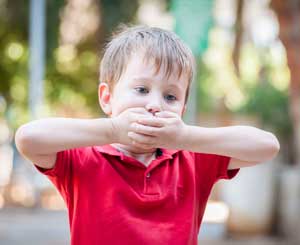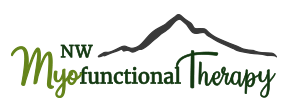Myofunctional Therapy vs. Speech Therapy
It’s important to clarify that myofunctional therapy and speech therapy are not the same thing. Just as dental hygienists aren’t trained in myofunctional therapy as part of their formal education, neither are speech pathologists.
However, myofunctional therapy exercises can be considered a foundational treatment when approaching speech problems. From the myofunctional perspective, if the muscles and tongue are not working properly, children can struggle to produce certain sounds. Therefore, it makes sense to rule out any muscular involvement prior to beginning a speech therapy program.
I regularly hear patients struggle to make the correct “S” sound. This is because lisping is a symptom that goes hand in hand with having a tongue thrust and mouth breathing.
Other specific sounds that are connected with having a tongue thrust and mouth breathing are “T”, “D”, “N” and “L”. These sounds require precise movement and placement of the tongue, which makes them challenging for those without fine control of their oral muscles. My myofunctional therapy program teaches both children and adults the precise movements and placement of the tongue, along with the muscle control that can help address functional problems related to speech.

How Can Myofunctional Therapy Help With Speech?
Myofunctional therapy and speech therapy are not the same. Neither hygienists nor speech pathologists are trained in myofunctional therapy as a part of their formal education. What’s great about myofunctional therapy exercises is that they can be used as a foundational treatment when addressing speech problems. If the muscles and the tongues are not functioning properly, children can experience challenges producing certain sounds. From a myofunctional perspective, it’s important to rule out any muscular involvement prior to beginning a speech therapy program. Myofunctional therapy programs can teach both adults and children precise movements and placement of the tongue, along with the muscle control that can address functional problems related to speech.
What Sounds Are Affected by Tongue Thrust?
In my experience, I often hear patients struggle to make the correct “S” sound. This is because lisping is a symptom that goes hand-in-hand with having a tongue thrust and mouth breathing. Other specific sounds that are connected with having a tongue thrust and mouth breathing are “T”, “D”, “N” and “L”. These sounds require precise movement and placement of the tongue, which makes them challenging for those without fine control of their oral muscles.
